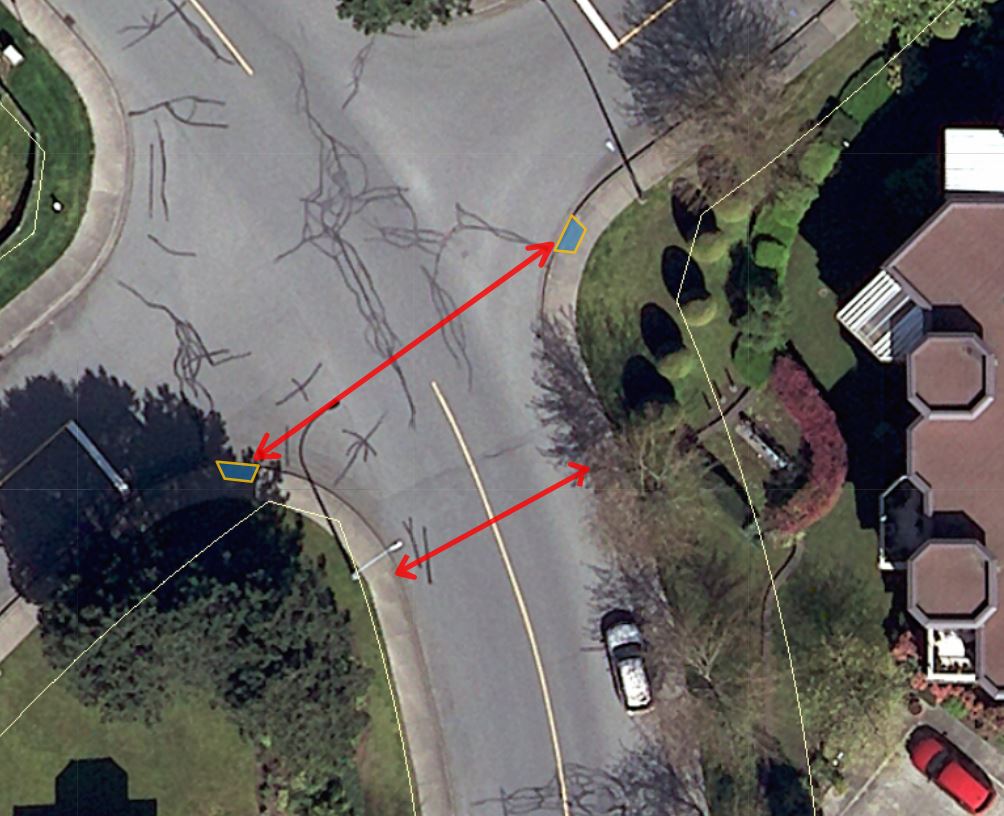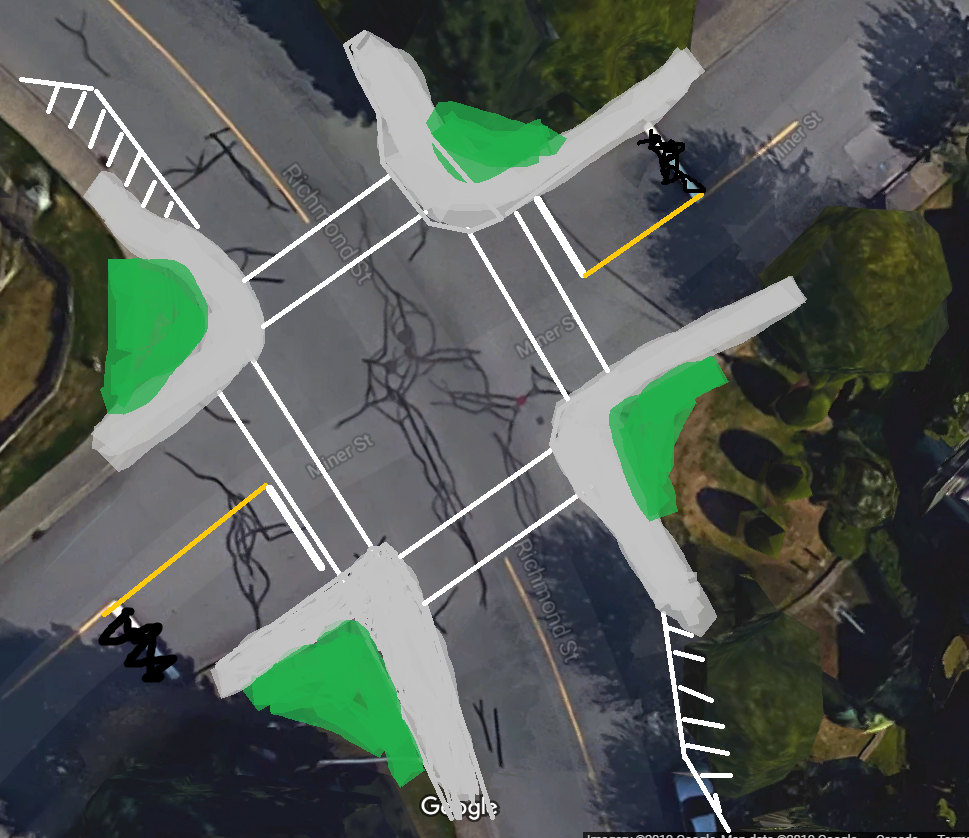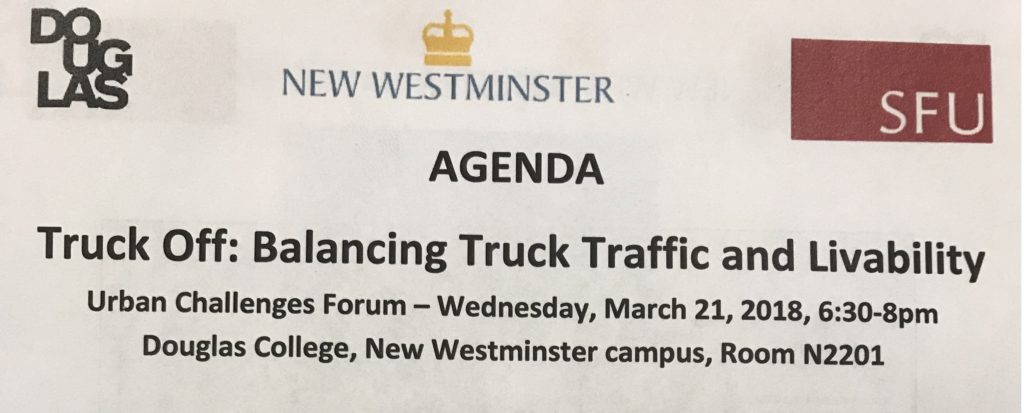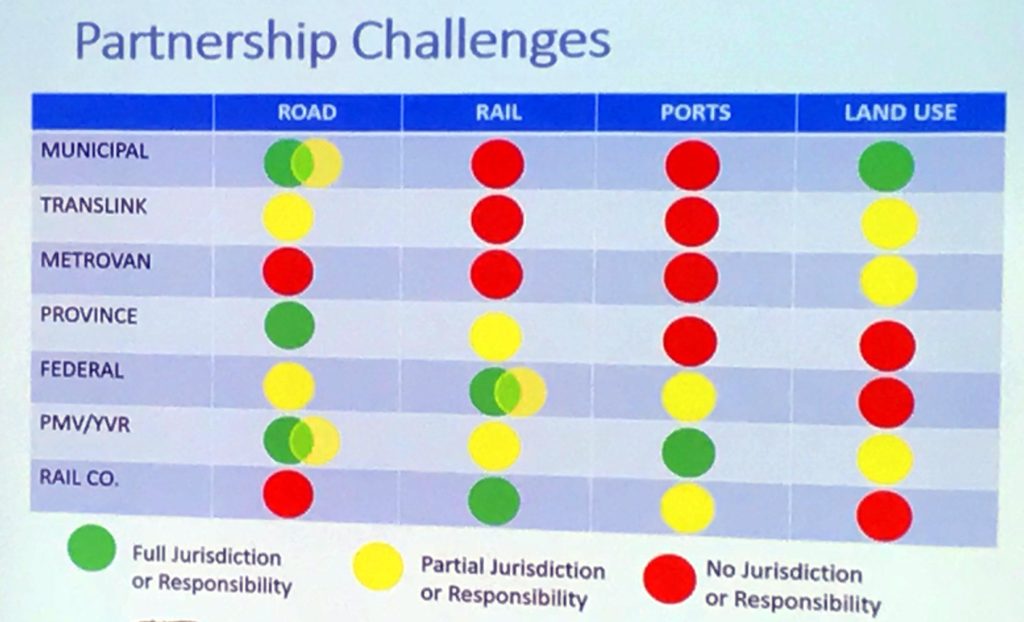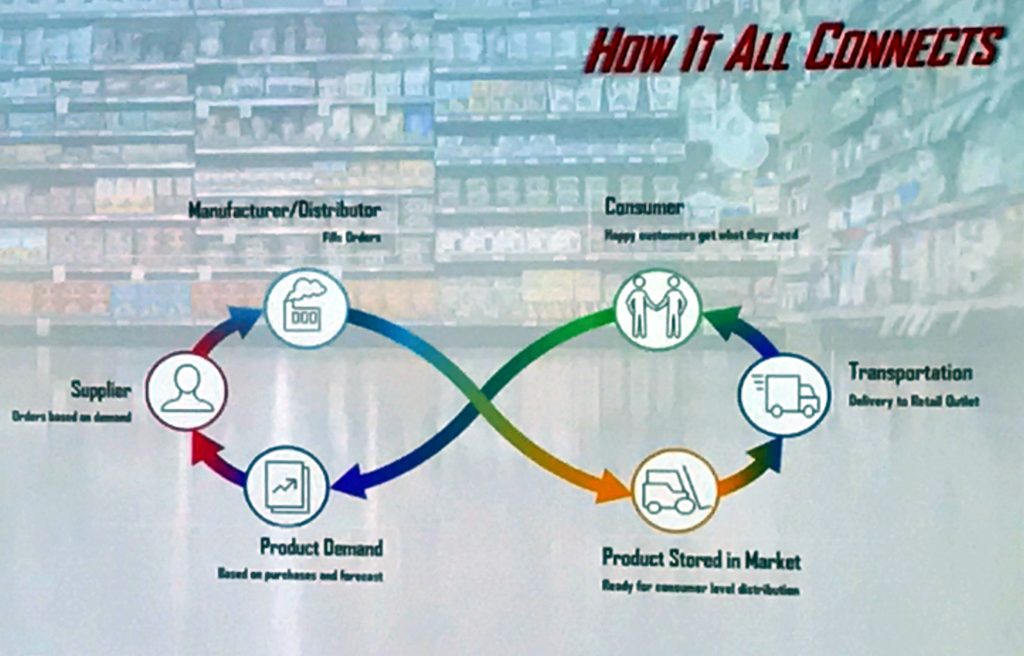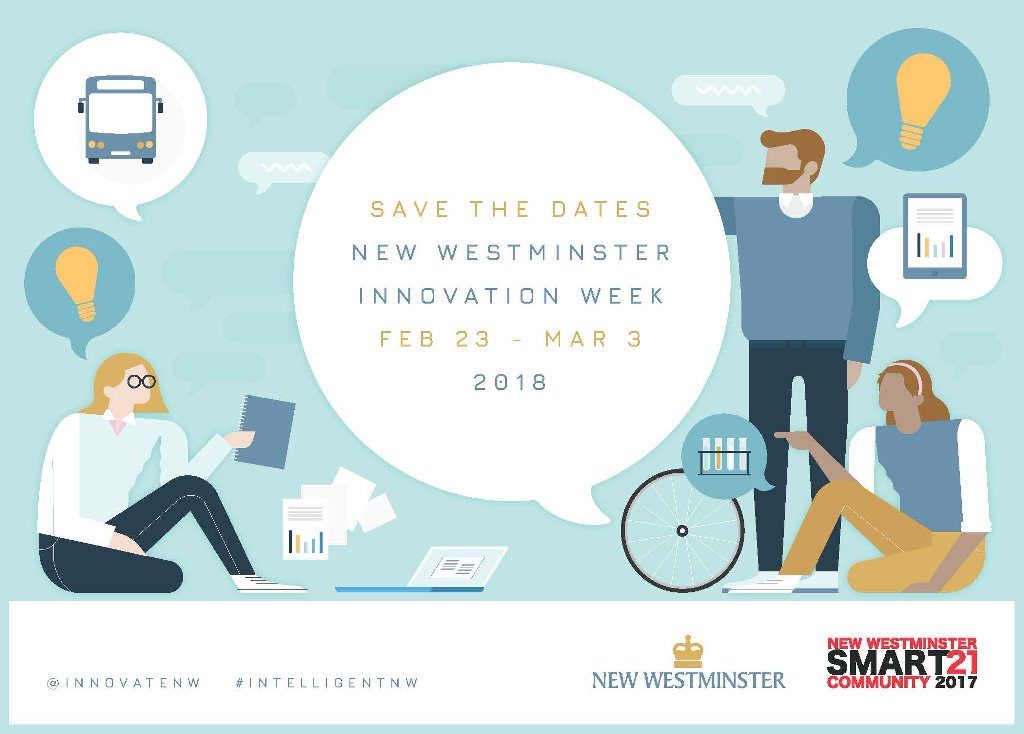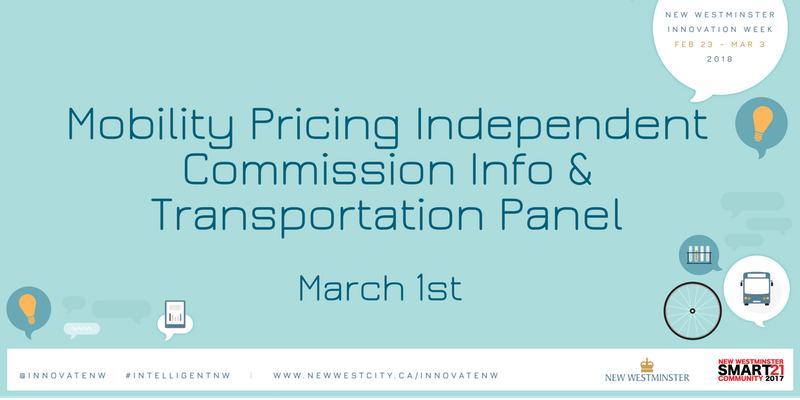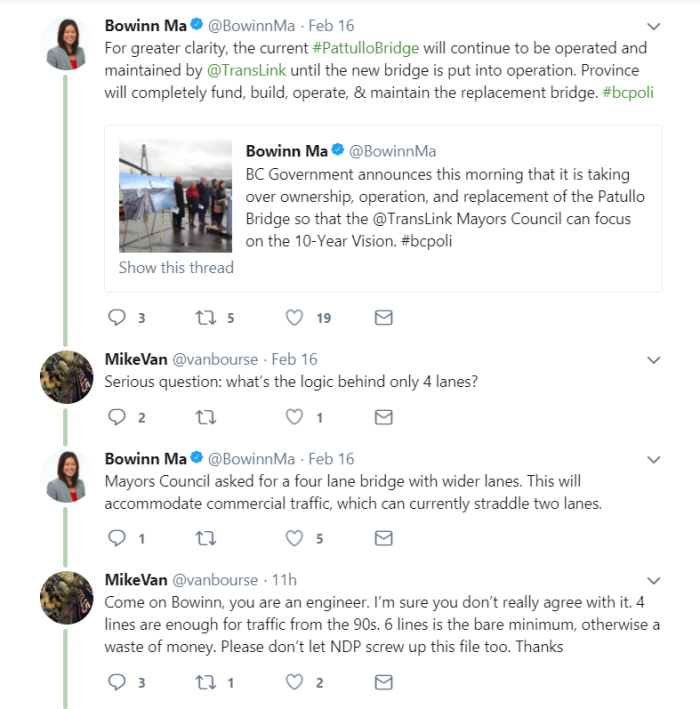I was fortunate to be able to attend the taping of a Price Talks podcast. It was a real transportation policy geek fest (and, alas, a real sausage fest). Jarrett Walker is a transit planning consultant, an author, and an academic with an incredibly cosmopolitan view of urban transportation systems. He has worked on 4 continents, and can see the universal truths expressed in the great variety of built forms in cities around the world. The conversation was wide reaching, from Coriolanus to Elon Musk, from the inescapable geometric truths of urban transportation to aesthetic as a guiding principle in urban planning. There were dozens of quotable nuggets in the talk, some I will be chewing on for a long time as I think about how to apply them to my neighbourhood and community
My favourite nugget, however, was the 4-minute summary of ride hailing and its impact on communities. You can skip to 1:09 to hear this as part of the Q&A at the end of the evening, but to fully appreciate his answer, you need to hear his earlier discourses on the phenomenon of Elite Projection, and how it is the scourge of most North American transit planning.
Walker is much more profound on this topic than I can ever be, but the short definition of Elite Projection is the tendency for the most wealthiest and most influential minority in a population to think what is good or attractive to them is best for everyone. It exists throughout hierarchical decision-making, and once you open your eyes to it, it is everywhere. In urban transportation, it is manifest in Musk’s The Boring Company and in “cute streetcar stuck in traffic” approaches to urban transit world-wide. There may be a few local examples: here, here, or even here.
The heart of his argument about ride hailing is best summed up in this quote (based on his observed experience in American cities where it has rolled out):
“…it has been a great way to draw out the worst aspects of elite projection, because people who can afford it have become addicted to it, [and] expect as a matter of course that it will be available… [but] like anything to do with cars, it only works as long as not many people use it.”
Part of the problem is that providing mass transportation in an urban area is not a profitable business. It never has been, and never will be. Uber and Lyft are losing billions of dollars a year, their underpants-gnome business plans being propped up by venture capital silliness, while they can’t even pay living wages or provide basic workplace protections to the people doing the labour (we aren’t allowed to call them “employees”). At the same time, they cut into public transit revenues while increasing traffic congestion making those transit systems less reliable, pushing customers over to the ride-hailing industry, exacerbating the impacts. He doesn’t even touch on how ride hailing demonstrably correlates with less safe roads for people in cars, pedestrians and cyclists, but he doesn’t need to.
The warning for Vancouver is that the introduction of ride hailing could be “really terrible” for our traffic systems and our livability, for obvious reasons. The promise of ride hailing is that it reduces parking demand by increasing traffic congestion – this is not conjecture, but the demonstrated experience around North America. That is no win at all.
For you Uber fans out there, Walker does provide a clear policy recommendation about how we can make ride hailing work in our jurisdiction without externalizing these real impacts, but I guarantee Francesco Aquilini and Andrew Wilkinson ain’t going to like it…
Give it a listen, it is a great conversation:
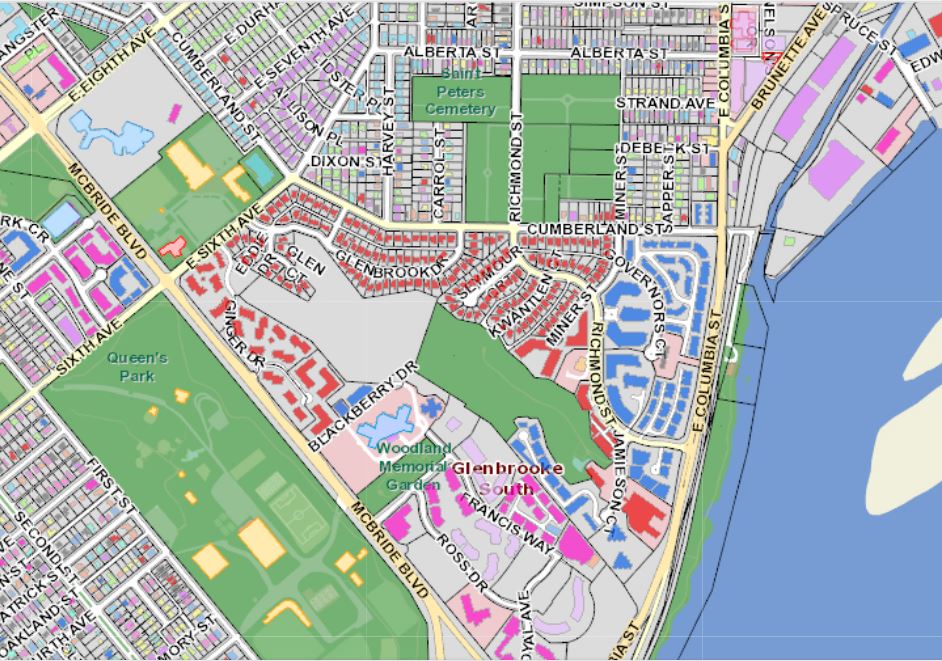

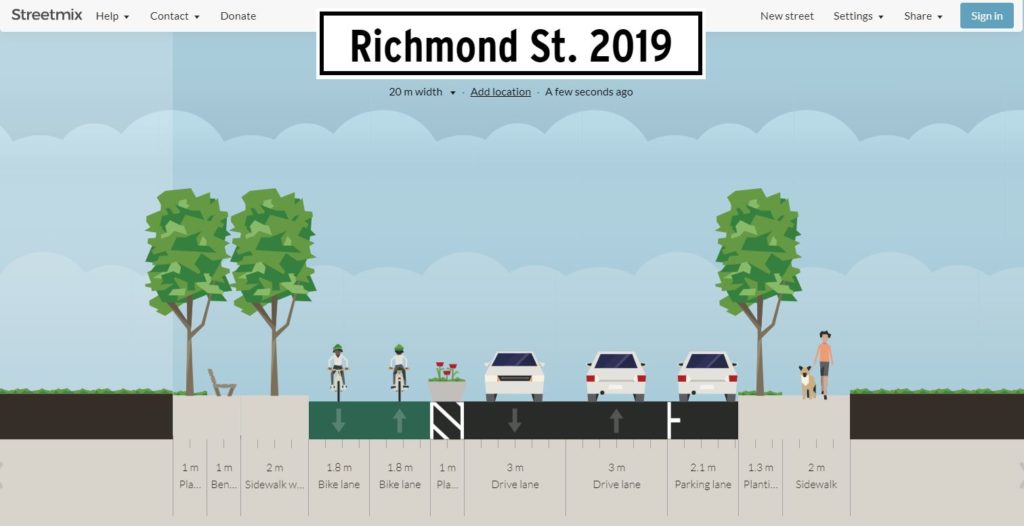 But that is just a representative cross section. There is another issue that makes the pedestrian experience even more uncomfortable. If you look at the intersection of Richmond and Miner, where staff were asked to evaluate placing a crosswalk, you see the corners are rounded off to facilitate higher turning speeds:
But that is just a representative cross section. There is another issue that makes the pedestrian experience even more uncomfortable. If you look at the intersection of Richmond and Miner, where staff were asked to evaluate placing a crosswalk, you see the corners are rounded off to facilitate higher turning speeds: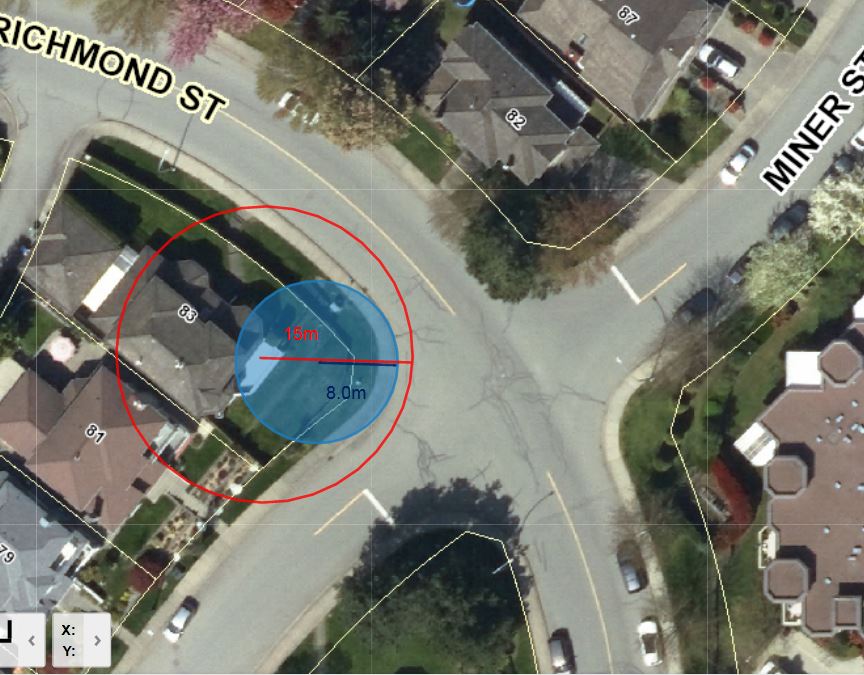 The technical term for this shape is “Corner Radius”. In this diagram you can see the curb follows a curve with a radius (blue) of about 8m, and the effective turning radius (tracing the track a vehicle would actually use for a right turn) is closer to 15m. By modern standards, this is a crazy wide corner, more suited for a race track than an urban area. Reading up on
The technical term for this shape is “Corner Radius”. In this diagram you can see the curb follows a curve with a radius (blue) of about 8m, and the effective turning radius (tracing the track a vehicle would actually use for a right turn) is closer to 15m. By modern standards, this is a crazy wide corner, more suited for a race track than an urban area. Reading up on 